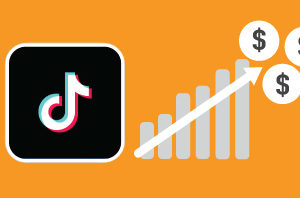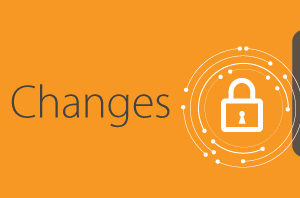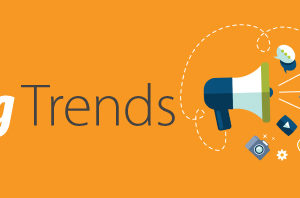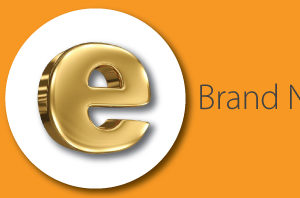
The American presidential election of 2016 prompted many citizens to become more politically active. Headlines of the election were hard to dodge, so many participated in the debate, both in-person and online. Since the election, that activity has only continued and seemingly grew louder. Instead of words, people have taken action; historic protests shot up around the nation and various causes, likely to lose federal funding, received donations. With the increasing political voice of consumers, some brands have decided to take a stand as well. Multiple brands have positioned themselves to align with a variety of causes.
It’s a risky move. Brands that get political can ostracize certain customers. It may pay off, however, if the cause is appealing to the bulk of their target demographic. Brands that appeal to younger audiences, for example, may embrace liberal views. Brands like Secret, that target women, may be successful in aligning themselves with women’s rights. The brands successful in aligning themselves politically may see increased loyalty from their base of customers and inspire new customers with the same ideals to purchase.
The following brands have aligned themselves with certain views and sparked conversation.
Secret: Pushing for All Women’s Rights
Secret has created multiple ads over the last year promoting women’s rights. First, there was the ad where a woman prepped to ask for a pay raise. Then, there was the ad that featured a trans woman. More recently, there was an ad titled ‘Pitch’ where two women prepared a business pitch.
All of these ads had a branded hashtag #StressTest to go along with them. They were well-received ads perfect for their target demographic – women.
P&G: #WeSeeEqual
P&G is actually the parent company of Secret (learn about how P&G follows the House of Brands strategy here). The following ad highlights this connection and takes clips from several of its popular commercials, including Secret’s #StressTest and Always’ #LikeAGirl. The goal was to address gender stereotypes, and it was released just before International Women’s Day.
Nike: Pro Hijab
Nike may not have meant to make a political statement when it released its Pro Hijab, but the political implications were unavoidable. The reactions are possibly the most varied on the list.
With the divisiveness of the issue of religion in the US, negative reactions to the Pro Hijab were bound to happen.
I will NEVER buy anything Nike again! Their greed for $$ is so great now accommodating Muslims? No sharia law in America!! #BOYCOTTNIKE pic.twitter.com/GW5TKWyMWx
— Cici (@Ptkay) March 9, 2017
Because of debate among liberals on the implications of the hijab (some believe it’s a symbol of oppression), there was backlash from the left as well.
Congratulations, @Nike for normalizing the oppression of women through the Pro Hijab. Disgusting.
— Connor R. Kenney (@realKenney) March 7, 2017
Nevertheless, many applauded Nike for providing Muslim women the opportunity to participate in sport, while still acknowledging their religion.
As diverse as these opinions may be, many can relate to the dread of working out.
This is horrible! I’ve been successfully using hijab as an excuse to avoid running for years. 😭 https://t.co/zQzlS8zbpC
— Hend Amry (@LibyaLiberty) March 7, 2017
Coca-Cola: ‘America the Beautiful’
Coca-Cola’s ‘America the Beautiful’ ad actually first aired in 2014. But following the contentious election, Coca-Cola chose to revive it and play it during the Super Bowl 2017 pre-game. The ad embraces the US’s diversity, showing clips of people of a variety of races, religions, and ethnicities. Meanwhile, the ad plays the song ‘America the Beautiful’ in multiple languages.
Interestingly, Coca-Cola was #10 in Fortune’s list of brands most loved by conservatives, so Coca-Cola had a lot to lose in using the ad.
Predictably, reactions were mixed.
.@CocaCola bows to leftism & spits on America by presenting the #NationalAnthem in foreign languages eg #Arabic. Disgraceful.#BoycottCoke
— Pat Buchanan (@PatBuch22908736) February 6, 2017
AMERICA THE BEAUTIFUL IN FOREIGN LANGUAGES WITH FOREIGNERS
Take your globalism elsewhere.#SuperBowl
— Mister Ogger (@MisterOgger) February 5, 2017
I’m about to buy a case of it and I don’t even drink soda like that https://t.co/fAFCkKC950
— Isdamid Seylin (@sideeyespecial) February 6, 2017
Our diversity is our strength. America The Beautiful #SuperBowl #Coke https://t.co/vhEBvJQ38d
— Keith Boykin (@keithboykin) February 6, 2017
Budweiser: ‘Born the Hard Way’
Popular American beer Budweiser took a gutsy stance on immigration, also during this year’s Super Bowl. It showed the journey of the company’s founder, a German immigrant with dreams to make it in America. The immigrant was insulted and struggled throughout the commercial, but his dream didn’t waver. Fortunately, the commercial ends on an optimistic note.
The commercial did see backlash.
Dumb marketing move. Illegals and muslims don’t drink beer. EBT cards aren’t accepted at liquor stores.. #boycottbudweiser #Hannity #DACA
— J Edagar Comey (@JoJoSmiths) February 1, 2017
Budweiser–DON’T take one down and pass it around–#BOYCOTTBUDWEISER
— Matrix Surfer SAM (@USAlivestrong) February 1, 2017
But not all reactions were negative.
Well done @Budweiser! I can’t watch your commercial without crying. My great grandfather was a German immigrant who came over in steerage…
— Jennifer Bardsley (@JennBardsley) February 1, 2017
Okay @Budweiser that Anheiser-Busch immigrant commercial just gave me literal chills! Great job! #SuperbowlAd
— Bravo Junkie (@Bravo_Junkie0) January 31, 2017
Taking a Stand is Important; But Be Cautious
As stated earlier, brands can see great success when they make these statements, but backlash is inevitable when posting a controversial view. Inc. provided some great tips on taking political positions:
- Pick Your Battles. Consider your customers, board, and top management when making these decisions. Under Armour forgot to consider how it’s stances may affect the athletes it sponsors. Don’t make a similar mistake.
- Be Your Own Devil’s Advocate. Prepare for the debate created on both sides and have a PR strategy in-place for when the ad is released.
- Be First. The first brand to take a stance on a certain issue is going to be the brand with all the media coverage. Brands following the first brand will likely be overshadowed. Nordstrom, for example, got all the attention when it dropped Ivanka Trump’s line. Neiman Marcus and Sears Holdings followed, but didn’t receive the same coverage.
- Spread the Word. If you do need to apologize for bad press, be direct and loud about it.
- Keep Influencers on Your Side. Under Armour CEO Kevin Plank’s comments resulted in a public feud with the brand’s most popular endorser Steph Curry.
- Show Some Back Bone. If your brand is going to take a political stance, it is important to stick to it. Flipping back and forth hurts trust, and the supporters you gained from taking a stand may be turned off if you backtrack.
All-in-all, politicizing brands can be very beneficial, but they can have very real consequences. Carefully consider the implications before moving forward. If your company decides to, be prepared and commit to your message.
1 Comment
Pingbacks
-
[…] What a year 2017 was for branding. Many brands got politically or socially active, a risky move. At times it struck a powerful chord with audiences; other times, it completely […]




